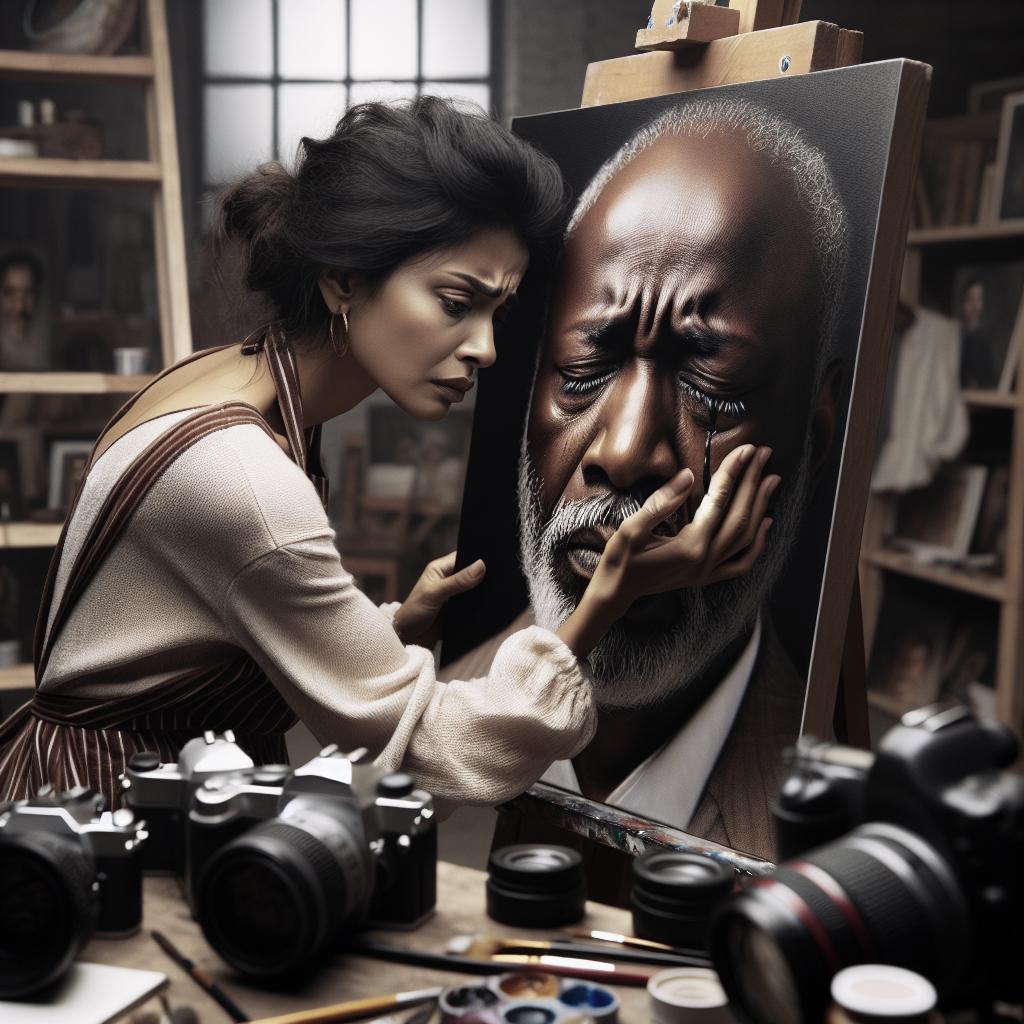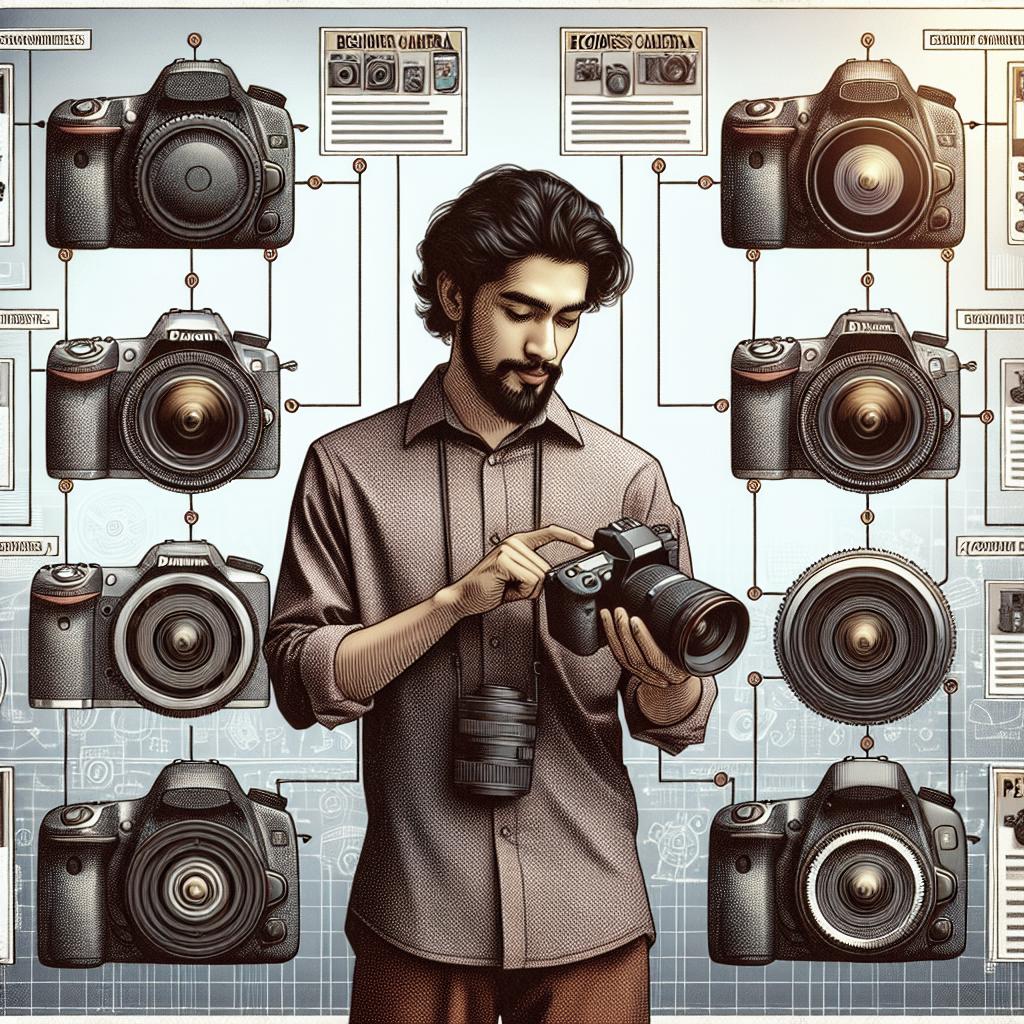“`html
How to Capture Emotion in Portraits
In the world of photography, capturing emotion in portraits can be a profound and rewarding pursuit. A portrait that conveys genuine emotion has the power to connect with viewers on an intimate level. The expression, the atmosphere, and the small, meaningful details contribute to telling the subject’s story beautifully. This blog delves into practical tips to capture authentic emotions, exploring the importance of shooting environments, minimal direction, and focusing on the eyes, among other techniques. By learning to anticipate key moments and using creative angles, you can enrich your photography skill set to evoke emotions, even when your focus strays away from human subjects. Whether you’re a budding photographer or someone seasoned in the craft, these insights can elevate the emotive quality of your work and enhance storytelling through your lens.
Tips for Capturing Genuine Emotional Pictures
1. Capture Your Subjects in a Familiar Environment
One of the most effective ways to capture genuine emotions in portraits is to photograph your subjects in settings that are familiar and comfortable to them. A familiar environment can naturally evoke emotions tied to their personal experiences. Whether it’s their home, a favorite café, or a place of significance, being in their element helps relax their expressions and brings forth genuine feelings. Such environments often act as a narrative tool, highlighting unique aspects of the subject’s personality and life.
Additionally, familiar surroundings can help subjects feel at ease, reducing any anxiety they may feel in front of a camera. When comfort is achieved, it is easier for a photographer to draw out authentic emotions. Preparing and setting the scene within familiar bounds ensures the captured moments are sincere and undistorted by the pressures of unfamiliarity.
2. Give Minimal Direction and Do Not Intervene
Less is often more when trying to capture authentic emotions. Providing minimal direction allows the subject to express themselves more genuinely. Rather than posing someone rigidly, offering gentle prompts or setting a basic storyline can lead to more candid expressions. This approach gives subjects the freedom to move naturally, enabling their personalities to shine through in the photographs.
It’s crucial to resist the urge to micromanage every aspect of the shoot. Interventions can disrupt the natural flow of emotions and hinder the ability of the subject to relax and be present. By embracing spontaneity and accepting imperfections, you give your subjects the space to reveal true emotions, which can be far more powerful in telling a story.
3. Give Your Subjects Something to Do
Engaging your subject in an activity can be a wonderful way to catch genuine emotions. When someone is absorbed in a task, they momentarily forget the camera’s presence, leading to expressions that reflect true emotions. Activities such as preparing a meal, playing an instrument, or interacting with a pet can ignite feelings that are much more authentic.
Such moments can capture a range of emotions, from concentration and joy to introspection and nostalgia. This method not only showcases the subject’s personality but also enriches the narrative of the portrait. The key is to choose activities meaningful to the subject, ensuring the emotions captured will be significant and telling.
4. Learn to Anticipate Important Moments
Anticipating significant moments before they happen can dramatically improve your emotional portraits. By understanding your subject’s character and predicting their emotions, you can position yourself to capture moments that resonate with authenticity. Observational skills are paramount; noticing subtle cues like a changing expression or a heartfelt glance can help you prepare for the perfect shot.
To hone this skill, dedicate time to keenly observing your surroundings and the subject’s interactions within them. Patience is a virtue; sometimes waiting for the right moment pays off much more than snapping away thoughtlessly. As you grow accustomed to reading moments, your efforts will reflect in the emotive depth of your portraits.
5. Focus on the Eyes
The eyes are indeed the windows to the soul and play a pivotal role in conveying emotion in photography. Emotion-rich portraits most often captivate viewers through the subject’s eyes, revealing an inner story with just a look. By focusing intensely on the eyes, you inherently draw out expressiveness that might otherwise go unnoticed.
A slight squint, a glint of tears, or the brightness of a wide smile can powerfully convey emotions like joy, sorrow, anger, or surprise. Additionally, employing techniques such as shallow depth of field can create an emphasized focus on the eyes, drawing viewers into an intimate gaze that captures the essence of your subject’s emotions.
6. Keep on Shooting
Continuous shooting can yield highly successful emotional captures. The candid moments between posed shots are often where the most authentic expressions are found. By maintaining the flow of the shoot without breaks, you encourage natural and organic expressions to surface.
Rapid shooting modes in modern cameras allow for capturing multiple frames per second, providing a rich selection from which to choose. This technique ensures you don’t miss fleeting, spontaneous moments that genuinely portray the subject’s emotions. By sorting through more images, you increase the likelihood of finding those exceptional, emotive shots.
7. Zoom in on Other Details
While the face is typically central in emotive portraits, focusing on other details can also effectively tell an emotional story. Hand gestures, the way hair falls, or the slight curve of a smile can provide deeper insight into a person’s emotions. These subtle details link to broader narratives and suggest emotions in a gentle, impactful way.
A close-up of clenched hands may depict anxiety, while a playful footstep resonates with joy. These less obvious details should be consciously considered, as they enhance the emotional depth of a portrait and contribute to a more intricate portrayal of the subject.
8. Use the Element of Surprise
Surprise can trigger a revealing burst of emotion, and capturing such moments can be both fun and rewarding. Whether it’s an unexpected visit from a friend, a joke, or a simple change of scenery, introducing surprise elements might elicit genuine smiles or expressions of warmth, delight, and other deep emotions.
Being prepared to capture these moments requires vigilance and creativity. Surprises should be planned tastefully, ensuring comfort and respect for the subject’s boundaries. Successfully photographing such unguarded reactions adds authenticity to your portraits and enriches the emotional narrative.
Which Type of Photography Shows Emotions?
Emotive photography can manifest across various styles and types but is most synonymous with portrait, documentary, and candid photography. Portrait photography captures the essence of an individual’s character, while documentary photography conveys stories and experiences, often highlighting emotions tied to real-life events or societal issues.
Candid photography thrives on spontaneity, capturing emotions as they occur naturally in both planned and unplanned scenarios. Each of these photography styles involves storytelling at its core, where emotions play a defining role in creating connections between the subject and the audience.
How Do You Photograph Emotions Without People?
Emotions can be powerfully expressed without direct portrayal of human subjects. Elements like landscapes, architecture, and inanimate objects can emit emotional pull, especially when considered with context and story. Thunderous clouds might convey anticipation or turmoil, while a dilapidated building might resonate with nostalgia or decay.
The key lies in capturing ambiance and mood through vivid, contextual imagery. Striking use of light, color, and composition can also effectively evoke emotions. It’s about finding a narrative within the scene that speaks to deeper human experiences and emotions, creating a bridge between the visual and the emotive.
Lessons Learned
| Strategy | Technique |
|---|---|
| Familiar Environment | Put subjects at ease by photographing them in comfortable surroundings. |
| Minimal Direction | Capture candid expressions by limiting interference and allowing subjects to express naturally. |
| Activity Involvement | Engage subjects with tasks that prompt genuine emotions. |
| Anticipation | Read and anticipate major emotional cues for timely shots. |
| Focus on Eyes | Draw out inherent expressiveness through focused eye shots. |
| Continuous Shooting | Use rapid photography to capture unfiltered, emotive intervals. |
| Detail Zoom | Convey emotions through less direct details like hands or posture. |
| Surprise Element | Elicit emotion by challenging expectations and capturing reactions. |
“`


